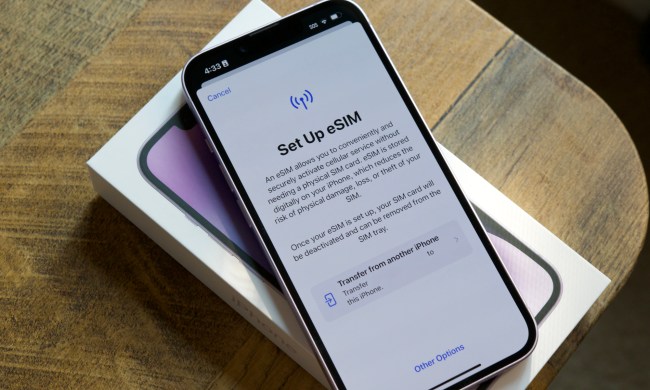We liked last year’s Honor 5X smartphone, which delivered exceptional cameras, a metal unibody, and a powerful processor for a palatable $250. It has since been superseded by the Honor 6X, which is bigger, faster, and better than its predecessor — yet manages to retain the excellent $250 price. Here’s everything you need to know about it.
How to buy one
Pricing starts at $250 for the Honor 6X with 3GB RAM and 32GB of storage. The 4GB/64GB variant is slated for an American release at $300, but is not yet available. Honor regularly holds flash sales and sweetens the deal with special offers, so always check to see what’s available through the company’s own online store before buying one.
Huawei has also made the Honor 6X available through 460 Target locations around the U.S., as well as through the retailer’s website. To see if there’s one being sold at a Target near you, check this link. You can also purchase the phone from a number of other online retailers, including Best Buy, Amazon
In the United Kingdom, the 3GB/32GB Honor 6X costs 224 British pounds through Huawei’s vMall online store, or it can be purchased on Pay As You Go, or with a monthly contract with Three U.K. It’s priced at 200 British pounds on Pay As You Go, or by paying monthly tariffs that start at 16 British pounds.
The Honor 6X comes in gold, silver, and gray. In addition to the United States and the United Kingdom, the phone is sold in France, Germany, Spain, Italy, the Netherlands, the United Arab Emirates, Saudi Arabia, Iran, and Iraq.
What you need to know about the Honor 6X
The Honor 6X originally launched at an October 2016 press event in China, with availability broadened with a launch in the U.S. and Europe at the beginning of January 2017.
It’s a beauty to behold. The slim, sleek Honor 6X boasts a unibody aluminum design and weighs 162 grams, and is a mere 8.2mm thick. The display, a 5.5-inch full HD (1,920 x 1,080 pixels) panel of the LCD variety, reaches 450 nits brightness and has a 0.3-second response time — a 42-percent improvement from previous Honor models.
Inside the Honor 6X’s machine-polished body sits Huawei’s custom Kirin 655, an octa-core processor comprised of four high-powered cores clocked at 2.1GHz and a second set of energy-saving cores at 1.7GHz. A coprocessor handles lighter tasks like speech recognition, music playback, sensor processing, and location tracking. Both are paired with either 3GB or 4GB of RAM, while internal storage managed by a smart file system, which automatically prevents file fragmentation and optimizes read and write speeds.
In May 2017, Honor updated the software on the 6X from Android 6.0 Marshmallow and the EMUI 4.1 user interface, to Android Nougat and the EMUI 5.0 user interface. We’ve noted the benefits of EMUI 5.0 in our reviews of the Huawei Mate 9 in particular, and welcome it here. In addition to the latest version of Android, the new software adds the option for an app drawer, simpler operation throughout the system, smoother performance, and various new features such as the chance to run two versions of certain apps.
Three cameras
The Honor 6X’s silicon and software is not the only highlight. Huawei’s new handset packs a rear camera with a 1.25μm pixel size, built-in noise reduction algorithms, and a Sony sensor capable of focusing on subjects in 0.3 seconds. It’s the first in the Honor series to pack a dual-sensor rear camera; a 12-megapixel sensor handles color data, while an adjacent 2-megapixel monochrome snapper measures brightness levels. Its software combines the two to produce brighter and crisper pictures in low-light conditions.
The dual-sensor design allows for other effects, too. The Honor 6X’s camera can refocus (within an aperture value of f/.95 to f/16) on subjects in the foreground after the picture has been taken, and automatically convert pictures to monochrome. Huawei’s accompanying software supports low-light shots, long exposure, and custom filters.
The front-facing camera and fingerprint sensors are nothing to scoff at, either. The Honor 6X’s 8-megapixel front camera features a 77-degree lens for wide-angle selfies and a built-in “Beauty” mode that recognizes and fixes blemishes. The Honor 6X’s fingerprint sensor also supports swipe gestures; swiping left and right flips through pics in a photo album, for instance, while a series of taps snoozes alarms and places calls.
The Honor 6X’s fast-charging 3,340mAh battery should last up to two days on a single charge, or up to 11.5 hours of video, 70 hours of music, and eight hours of gaming.
The Honor 6X launched on the eve of the Honor brand’s third anniversary, and now reaches more than 74 different countries and regions, topping $6 billion in global sales during 2016.


